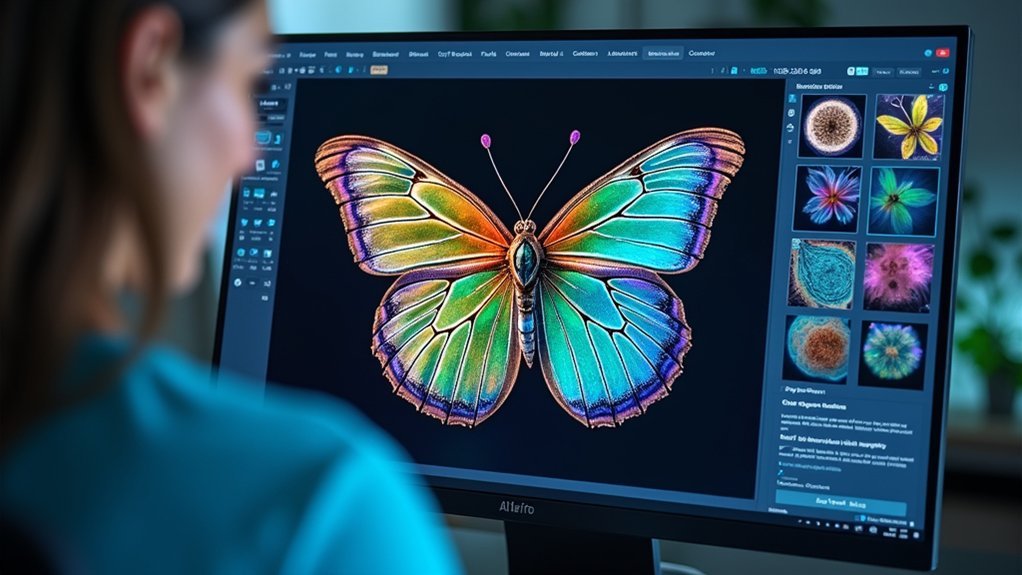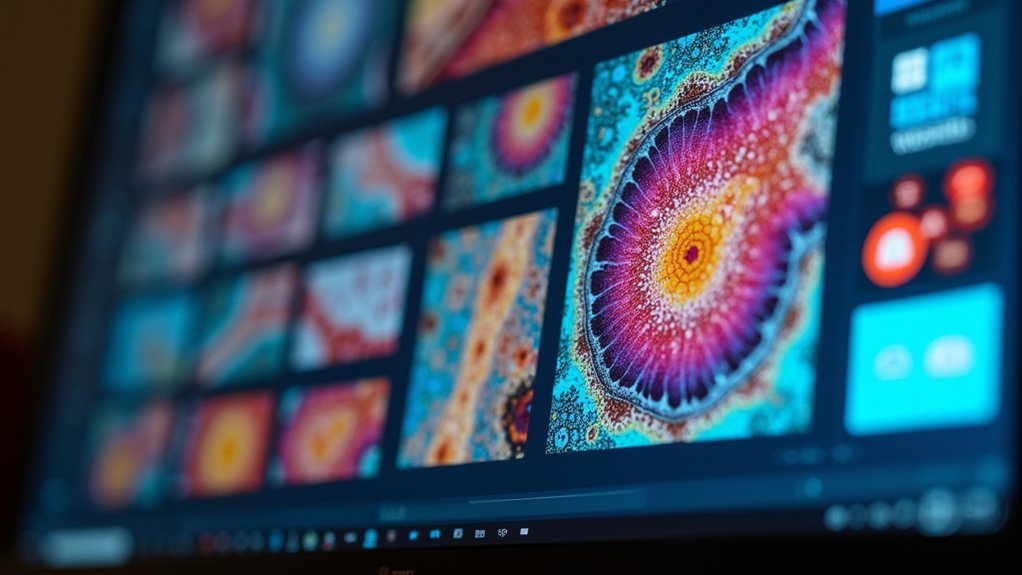For microscope image stacking, you’ll find five excellent free tools: Hugin offers powerful alignment capabilities across all platforms; DeepSky Stacker provides one-click operation for quick results; Combine ZP works well at lower magnifications despite its basic interface; Picolay specializes in microscope photos; and Focus-stack maintains original resolution through command-line processing. Each tool balances ease-of-use with final image quality, helping you capture details impossible with single shots. The right software choice depends on your specific magnification needs and workflow preferences.
5 Best Free Software Tools For Microscope Stacking

Five powerful free software options stand out for microscope stacking enthusiasts.
If you’re looking to enhance your microscopy images without spending a dime, these tools deliver impressive results with varying processing times.
Hugin offers an excellent free and open source solution compatible across Windows, Mac, and Unix systems, featuring the Enblend-Enfuse package that excels at creating extended depth of field in stacked images.
Hugin delivers exceptional image stacking across all major platforms with its powerful open-source Enblend-Enfuse technology.
DeepSky Stacker (DSS) impresses with its one-click operation for quick focus stacking.
For microscope-specific applications, Combine ZP works decently at lower magnifications despite its crude interface, while Picolay focuses exclusively on microscope photos though some users find its results challenging to perfect.
Each tool balances ease of use with image quality, giving you options regardless of your experience level.
Focus Stacking Fundamentals for Microscopy Applications
While traditional microscope photography struggles with limited depth of field, focus stacking revolutionizes how you can capture microscopic subjects. This technique combines multiple images taken at different focal points to create one high-quality composite with enhanced clarity throughout.
Using Free and Open Source stacking software, you’ll achieve professional results without expensive commercial solutions:
- Capture a series of images at slightly different focal distances.
- Use alignment tools like Hugin’s align_image_stack to precisely register your image stacks.
- Apply fusion software such as Enfuse to blend the aligned images.
- Automate your workflow with scripts like crush_stak for processing multiple stacks efficiently.
The excellent free tools available today make creating your final stacked image straightforward, giving you laboratory-quality results without the premium price tag.
Comparing Open-Source Focus Stacking Solutions

When exploring the world of free focus stacking software, you’ll discover several powerful alternatives to expensive commercial packages. Focus-stack by Petteri Aimonen offers command line efficiency, processing multiple images in about 50 seconds while maintaining full resolution—perfect for batch processing.
| Software | Key Advantage | Limitation | Interface Type |
|---|---|---|---|
| Focus-stack | Retains original resolution | Command line learning | Command line |
| Picolay | Specialized for microscopy | Performance issues | Graphical |
| Combine ZP | Free with excellent results | High-mag challenges | Graphical |
| Hugin | align_image_stack feature | Primarily for panoramas | Mixed |
While Helicon Focus delivers faster processing, its demo and Lite versions limit output resolution. Don’t overlook community forums, where user experiences can help you navigate open-source tools’ quirks and achieve professional-quality stacks.
Step-by-Step Guide to Processing Microscope Image Stacks
Now that you’re familiar with the software options, let’s walk through the actual process of creating stunning focus-stacked microscope images. The excellent free and open tools we’ve discussed make it easy to use advanced stacking techniques for improved results.
- Capture multiple images at different focus depths and convert them to TIFF format using ImageMagick for maximum quality. Verify proper naming in alphabetical order.
- Align your stack with Hugin’s align_image_stack feature, which precisely positions each image for seamless integration.
- Fuse the aligned images using Enfuse to enhance depth of field and create a sharper final image.
- Consider automation with tools like crush_stak shell script to automate stacking process when working with multiple image sets.
Enhancing Microscopy Results With Post-Processing Techniques

After you’ve created your focus-stacked image, several post-processing techniques can greatly enhance your microscopy results.
Image stacking notably improves clarity and depth of field by combining multiple images taken at varying focus depths.
Free software tools like Hugin with its align_image_stack function excel at precisely aligning TIFF images, while Enblend-enfuse can fuse these aligned images to create extended depth of field results.
You’ll notice considerable quality improvements in your final outputs when using these specialized tools.
To streamline your workflow, automation scripts like crush_stak include commands for both alignment and fusion, saving you valuable time.
For additional guidance, microscopy-uk.org.uk offers extensive resources to help you refine your post-processing techniques and achieve professional-quality microscopy results.
Frequently Asked Questions
What Is the Best Software for Image Stacking?
For image stacking, you’ll find Hugin with Enblend-Enfuse is excellent for user-friendly operation. If you’re comfortable with command-line, Focus-stack offers superior resolution retention. Both are free and highly effective tools.
Is Zerene Stacker Free?
No, Zerene Stacker isn’t free. You’ll need to purchase it for $39 for the Personal version. However, you can try it first with their trial version before deciding to buy it.
Does Photoshop Do Focus Stacking?
Yes, Photoshop does offer focus stacking capabilities. You’ll find this feature under “Auto-Blend Layers” where you can combine multiple images taken at different focus points for greater depth of field.
Does GIMP Do Photo Stacking?
GIMP doesn’t have built-in focus stacking, but you can manually achieve it using layers and masks. For a more automated process, you’ll need to install third-party plugins from the GIMP Plugin Registry.
In Summary
You’ve now discovered five powerful free tools to elevate your microscope stacking results. Whether you’re a beginner or seasoned microscopist, these software solutions will help you overcome depth of field limitations and create stunningly detailed images. Don’t hesitate to experiment with different programs and post-processing techniques—they’ll transform your scientific imaging and reveal microscopic worlds with unprecedented clarity.





Leave a Reply